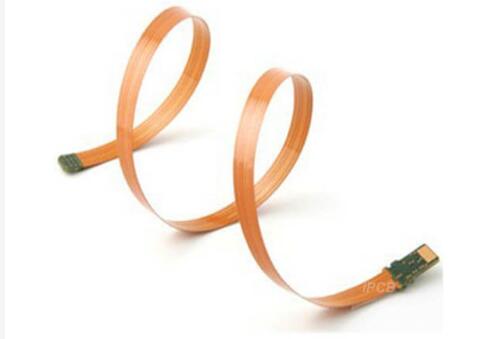Flex substrate is a thin and heat-resistant material typically made of polymers such as polyimide and polyethylene terephthalate (PET). In many computing and electronic devices today, micro PCBs that transmit signals between control prompts and screens are typically made of flexible substrates.

Flex substrate material, also known as elastic substrate material, is usually a very thin and soft material made of polymer materials such as polyimide, polyamide, polyester, polyether, polyurethane, etc. It can be maintained in a stable form under various environments and stresses through some special processes for application in various technical fields.
Characteristics and advantages of flex substrates
Flex substrate materials have the following characteristics and advantages:
1. Thin: Compared to traditional hard substrate materials, flex substrate materials are very thin, with an average thickness of only tens of micrometers, which makes them very advantageous in certain fields such as semiconductor IC and LED.
2. Lightweight: Due to its thinness, the flex substrate material is very lightweight, making it very useful in lightweight application scenarios such as portable electronic devices, glasses, etc.
3. Flexibility: This is the biggest characteristic of flex substrate materials, which can bend and curl without cracking or deformation. This allows it to play a role in application scenarios such as wearable devices, flexible electronic products, foldable displays, etc.
4. Customizable: Flex substrate materials can be customized according to specific requirements to meet the needs of different application scenarios.
Application of Flex Substrate Materials
Flexible substrate materials have been widely used in many fields.
1. Wearable devices: Flex substrate materials can be integrated with other components, allowing them to manufacture wearable devices that highly conform to the shape of the human body curve.
2. Flexible electronic products: Flexible substrate materials can help manufacture more flexible and easy to store electronic products, such as curly televisions, flexible smartphones, etc.
3. Medical equipment: Flexible substrate materials can help manufacture softer and more comfortable medical devices, such as wearable medical monitoring devices.
4. Industrial applications: Flex substrate materials are also suitable for industrial fields, such as flexible sensors, flexible touch screens, etc.
Common types of soft board substrate materials
In Flex PCB, the commonly used substrate materials are polyimide (PI) film and PET. In addition, polymer films such as PEN, PTFE, and aramid can also be used.
Polyimide (PI) is the most commonly used material for Flex PCBs, with excellent tensile strength and stability in the operating temperature range of 200 to 300. It has chemical corrosion resistance, excellent electrical properties, high durability, and excellent heat resistance. Unlike other thermosetting resins, it can maintain its elasticity even after thermal polymerization.
PET resin has poor heat resistance and is not suitable for direct welding, but it has good electrical and mechanical properties. PEN has better mid-level performance than PET.
Liquid Crystal Polymer (LCP) Substrate
LCP is a rapidly popular substrate material in Flex PCBs because it overcomes the drawbacks of PI substrates while maintaining all the characteristics of PI. LCP has 0.04% moisture resistance and moisture resistance, with a dielectric constant of 2.85 at 1GHz.
Copper foil
Another top-level material in Flex PCB is copper, which is filled with copper as a conductive material in PCB wiring, pads, vias, and holes. There are two methods of copper deposition on a 2-layer flexible copper-clad laminate substrate.
Flex PCB is composed of multi-layer flexible substrates and conductive materials covered on the substrate. Flex substrate is usually made of polymer materials such as polyimide film (PI), which has high temperature, corrosion resistance, and good electrical properties. Conductive materials can be copper foil, silver paste, or other metal materials used to achieve electrical connections between electronic components.